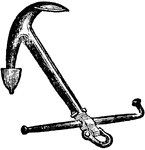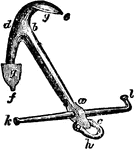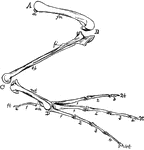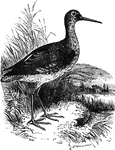Clipart tagged: ‘shank’

Admiralty's Anchor
"The Admiralty anchor differs only from the ordinary anchor in having a nut, a, worked on the square,…

Anchor
"The vertical or supporting beam of the A. is the shank, B; at the upper end of it is the ring, r; and…

Bower Anchor
"A, is the cathead; B, the fish davit; C, and E, bollards; D, the bill-board. The anchor is held in…

Common Anchor
"The shank is the straight part, ab; the square, ac, is that part of the shank to which the stock and…
Drill and Socket Construction
This is the body attachment for a drilling machine which is composed of the adjustable socket which…

Bones of a Bird's Hind Limb
"Fig 34 - Bones of a bird's hind limb: from a duck, Clangula islandica. A, hip: B, knee: C, heel or…

Martin's Anchor
"The anchor is represented in the position in which it lies on the ground just before taking hold. The…

Spotted Redshank
The common red-shank averages about twelve inches in length, and makes its home along sea-shores, and…

Rodger's Anchor
"The stock is of iron in large as well as small anchors, and is made with a mortice, to fit over the…

Green Sandpiper
The Green Sandpiper (Tringa ochropus) is a small shorebird in the Scolopacidae family of waders. It…

Shank Bones
A section of the bones of the crus (shank of the leg) taken at about the middle of their length (schematized)…
Sheep-Shank
"Sheep-Shank -- Formed by making a long bight in a topgallant back stay, or any rope which it is desirable…

Trotman's Anchor
"The stock is of iron, similar to the Admiralty anchor; the shank is of rectangular section, somewhat…

